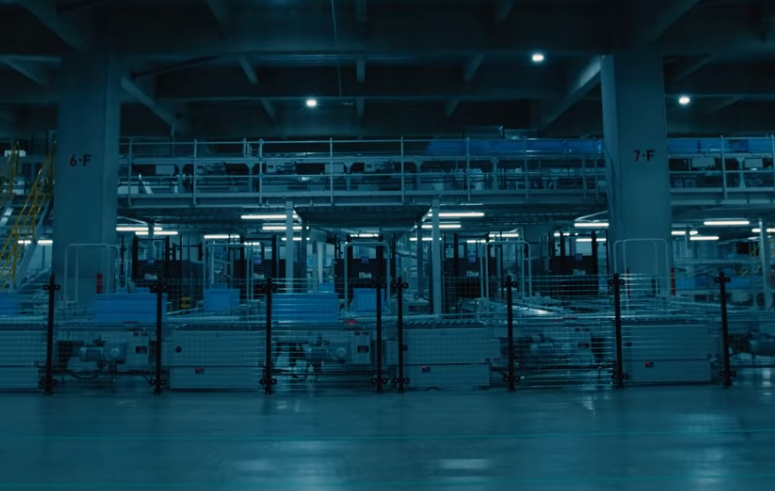Japanese retailing giant UNIQLO opened their Ariake offices back in 2015 but the warehouse was plagued with problems and inefficiencies. So the company committed to overhaul the warehouse, which was unveiled last week. The result, in which 90% of the warehouse workforce was replaced by robots, is equally beautiful and terrifying.
In the video above that was produced about the warehouse, crates get lifted from ceiling-high shelves by robotic cranes; boxes zoom down conveyor belts getting sorted left and right. In fact, from the moment that trucks arrive at the warehouse with merchandise, to the time the boxes are shipped out to customers, there seems to be only 1 instance of human interaction: the act of placing the merchandise into the box. Everything else from inventory management and storage to box assembly and distribution is done by robots.
The Ariake Warehouse overhaul is part of a broader agreement between UNIQLO and Daifuku, a provider of customized inventory solutions such as this one. Together, the companies plan on automatic all of UNIQLO’s warehouses and work has already begun in factories in China, Thailand, Australia and the U.S. Welcome to the future.
























October 17, 2018 at 2:13 pm
It has to be admitted that the use of human beings to shift objects from point A to point B (repeatedly) is meaningless and unfulfilling work, and falls in the category of ‘bullshit jobs’ described Graeber et al.
October 20, 2018 at 8:12 am
I agree with Neko, no one really wants to do that type of work. The pay is low, quite hard and meaningless. So, in reality, we should be quite thankful for these robots that release us from getting trapped in these types of jobs. The problem is everyone now has to find a work that is creative and can’t easily be done by robots. Our future is filled with problems, but opportunities too.
October 31, 2018 at 3:16 pm
Terrifying is right, as Johnny stated.
Moving things from place to place is meaningless work? You’ve just described the transportation and warehousing industry, employing 5 million people in 2016, in the US alone. Not to mention the manufacturing industry, at over 12 million jobs in 2016; again, in the US the alone.
Where are those people going to work? What will afford them the ability to have a family, buy a house and car, and send their kids to college? Jobs in the gig economy, that often fall below minimum wage because the workers are classified as self employed independent contractors? We’ve seen what has happened as manufacturing workers in the United States have lost their jobs in what we now call the Rust Belt.
I don’t see where this trend of endless automation and elimination of workers takes us in the end other than a three class system — wealthy elites controlling the corporations, a small cadre of specialized, highly trained and well paid workers programming and repairing automated systems, and a vast sea of service workers who are uneducated, easily replaceable, and receiving a poverty level wage or who live in indentured servitude in exchange for food and shelter. A handful of entertainers, and never-ending war, to keep the masses distracted. This will be a generational caste system, with no way to escape what you are born into. Class mobility is already nearly non-existent, and likely to get worse.
But neat machines!